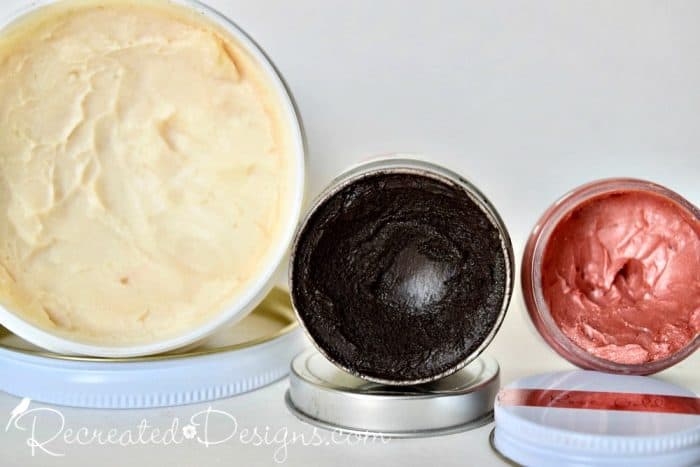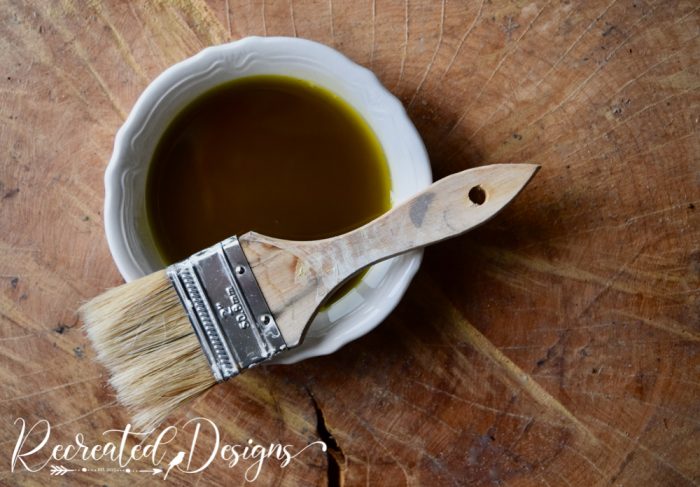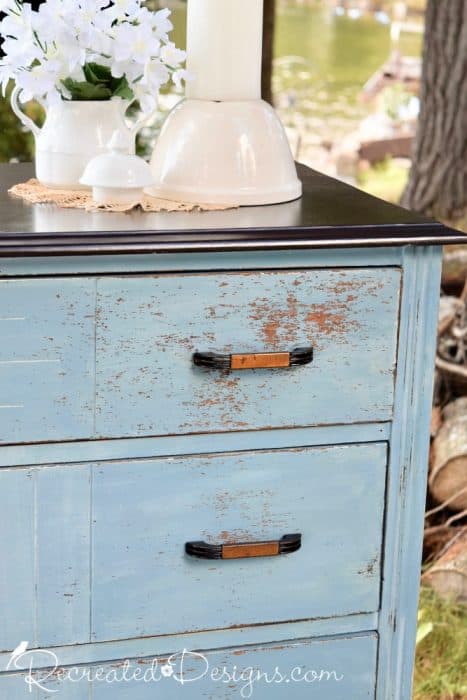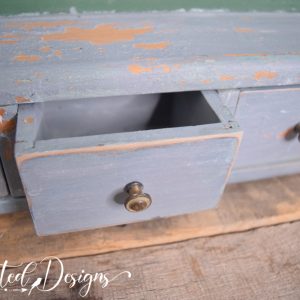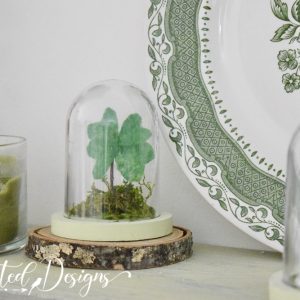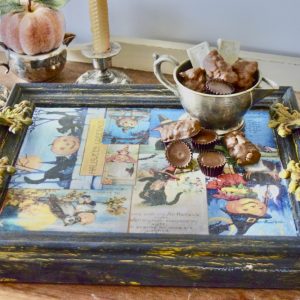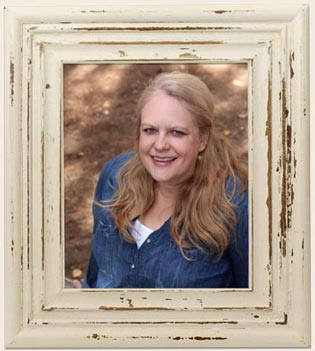Last week in the Back to the Basics series we talked all about the differences between furniture and home decor paints (see that post here…). This week let’s talk finishes and topcoats for those paints.
Finishes and topcoats can really be broken down into several categories when you are looking at furniture and home decor projects. You have waxes, clear coats, and oil. Each one has a different look but also a different level of protection.
Clear Coats and Lacquers
The most durable of any of the topcoats will be a water-based clear coat or Lacquer. A water-based clear coat or Lacquer will provide a topcoat that does not change the colour of your piece while giving you excellent protection. This type of finish is great for a table/counter/dresser top or any high traffic area.
When you are working with furniture and home decor projects and paints, you want to make sure you choose a water-based product. Any clear coat that isn’t water-based will yellow over time. If you are using a light or white coloured paint this will be especially important as you don’t want to do all of that work only to have the paint look dirty or yellow.
Waxes
Waxes are a durable topcoat choice that come in a wide variety of colours including clear. They are typically applied over paints that have no acrylic or latex in them (they are great for Annie Sloan Chalk Paint and milk paints). If there is acrylic or latex in the paint, the wax will simply sit on top of the paint and will not absorb in.
When working with wax, it generally takes about 30 days to cure (for the water to evaporate out) so be gentle with your waxed surface until then. Waxed surfaces will become water resistant but not waterproof once they have cured.
To check out some of the beautiful coloured waxes out there, see this post here…
Oils
Oils are a great choice again, for paints without latex or acrylic in them. With a paint that does not contain either, an oil will soak in and cure to a nice protective finish. It may feel and look greasy at first but will soak right in and typically dry in a few days. Oil is a great choice if you want your piece to have a naturally aged feel to it.
Hemp oil is an especially great finish for milk paint. It is easy to rub on with a cloth and is food-grade safe so can be used on cutting boards etc…
No matter which finish or topcoat you use, the main thing to consider is how much wear and tear the piece will get. A clear coat or Lacquer will give you the most protection, then a wax and then an oil.
Just remember that you only need one finish or topcoat. There is no need to apply more than one to the same spot. You may use several on one piece – a clearcoat on the top and hemp on the body for instance – but never both together.
Each topcoat has great qualities and does something different. Give them a try and see which you prefer. You may find that you like them all.
Pin for later…



